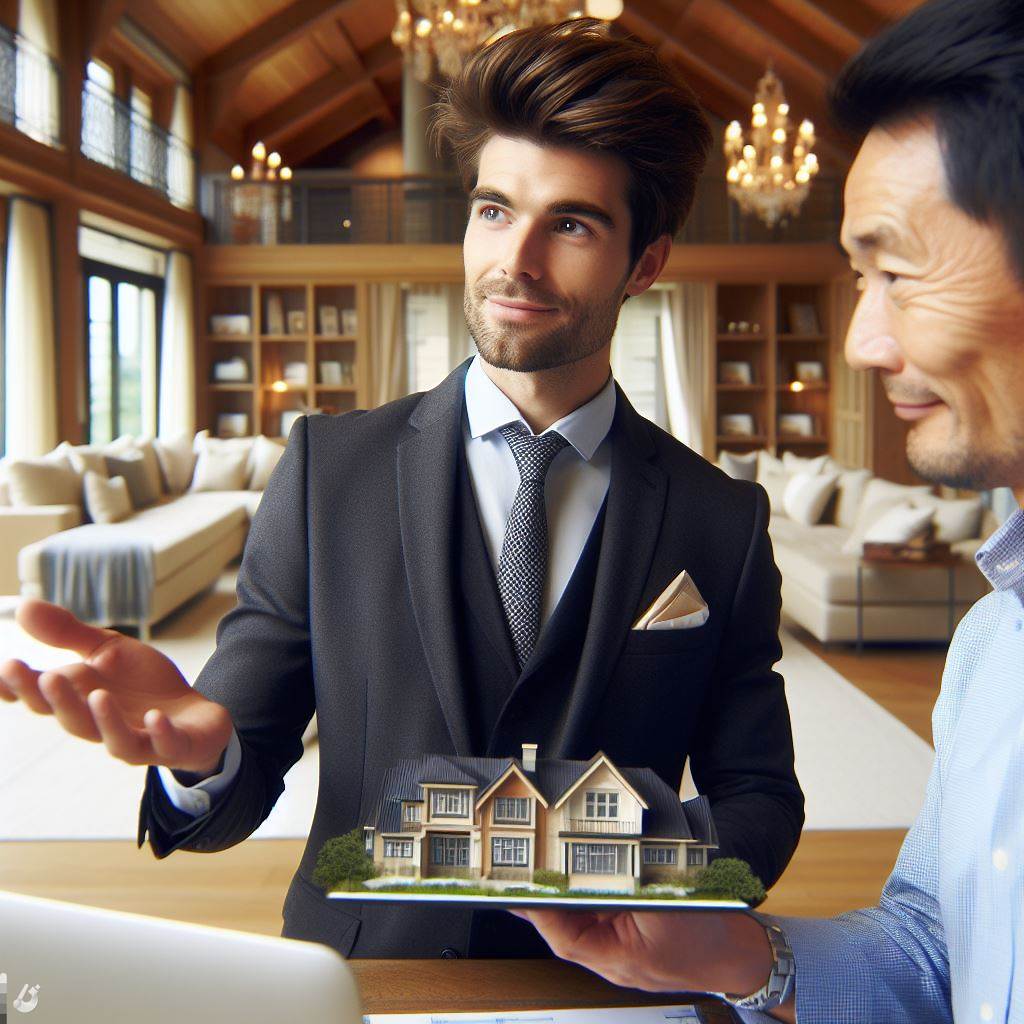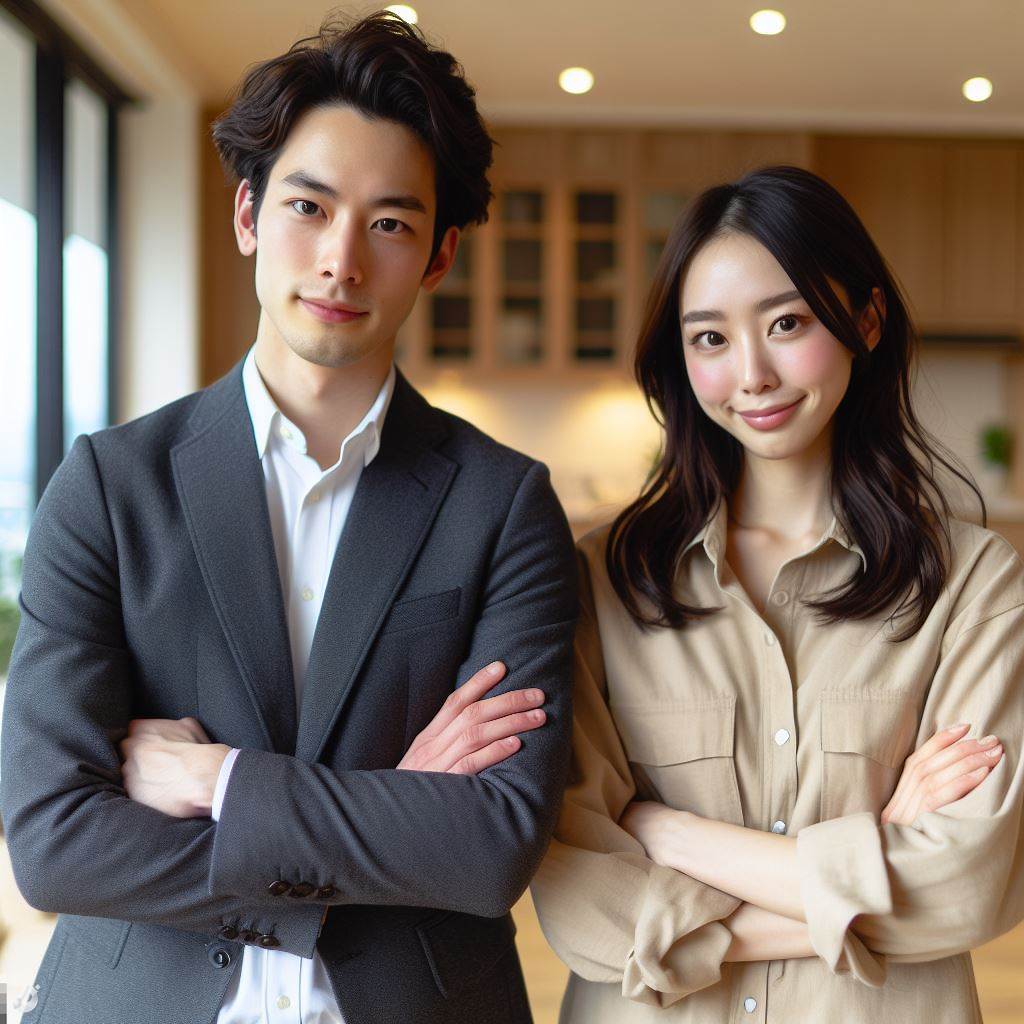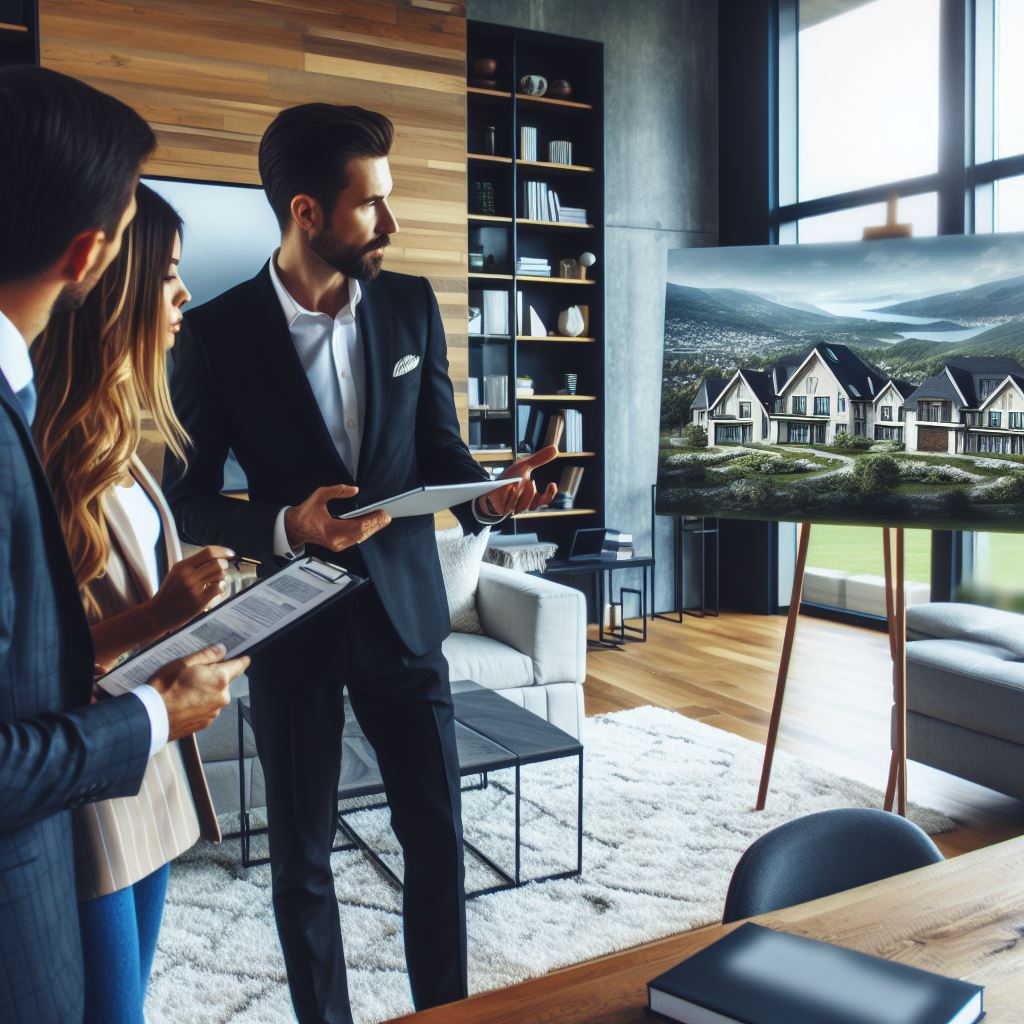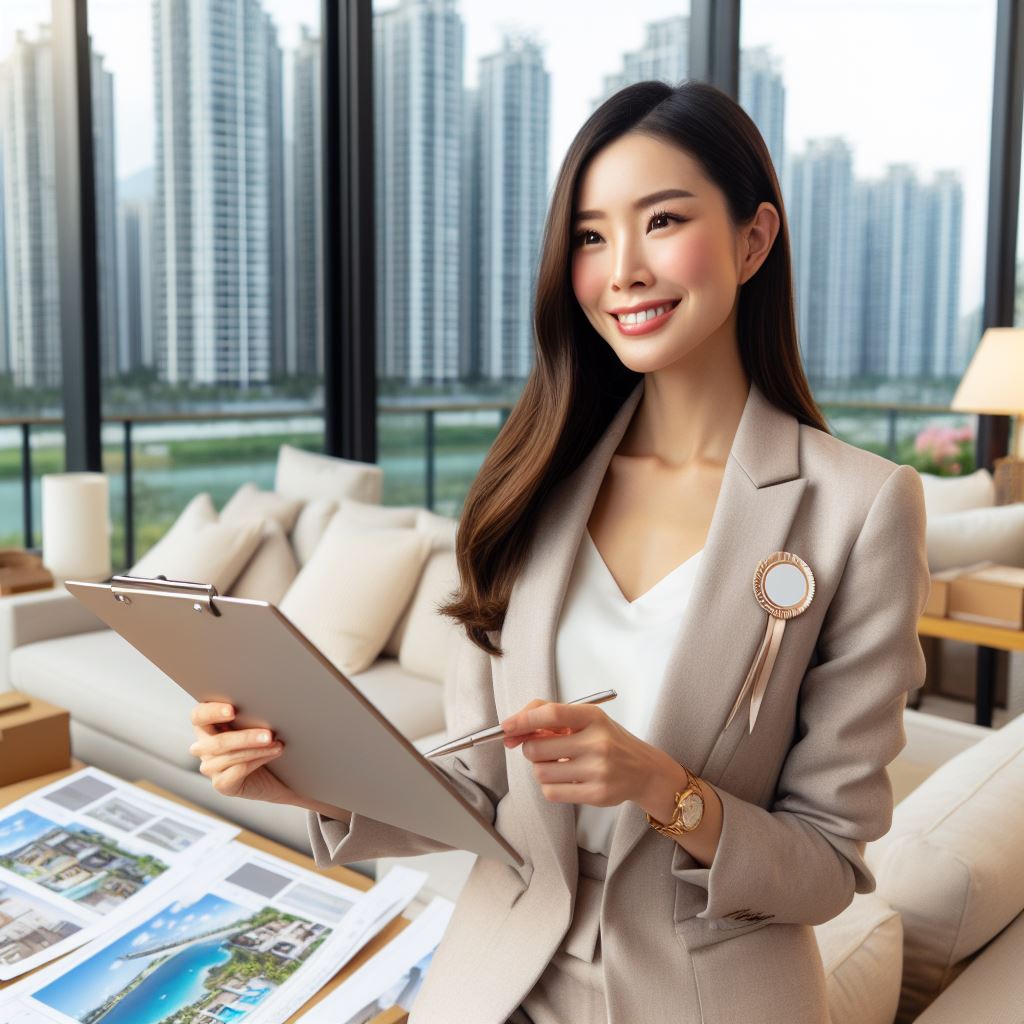Introduction
In a world where design evolves at the speed of innovation, there’s a timeless allure in the marriage of vintage charm and modern sophistication.
Picture this: a room where the classic elegance of a bygone era seamlessly intertwines with the sleek lines of contemporary design.
It’s a captivating dance between history and the present, and in the realm of upscale interiors, this fusion is not just a trend; it’s a design philosophy that transcends time.
Welcome to the enchanting world where “Vintage Meets Modern in Upscale Interiors.”
This design movement is a celebration of the past and the future coexisting harmoniously within the confines of four walls.
At first glance, it may seem like an unlikely pairing – the ornate details of vintage aesthetics colliding with the clean, minimalist lines of modern design.
However, it’s precisely this dichotomy that sparks a visual symphony, creating spaces that are not only luxurious but also deeply intriguing.
As we traverse deeper into the 21st century, a shift in design preferences becomes evident.
Homeowners and designers alike are increasingly drawn to the allure of combining vintage elements with contemporary sensibilities.
The trend is not just about preserving the past; it’s about reimagining it in a way that resonates with the present and future.
Imagine a room where a classic Chesterfield sofa shares space with a sleek, angular coffee table – a captivating blend of worlds that brings character and warmth to the most modern settings.
In the sections that follow, we’ll delve into the nuances of this captivating design fusion.
Exploring Vintage Style
What is Vintage Style?
Vintage style refers to a design aesthetic that draws inspiration from previous eras, particularly the 1920s to 1970s.
It is characterized by its nostalgic charm, elegance, and attention to detail.
Key characteristics of vintage style include ornate patterns, rich textures, muted color palettes, and an overall sense of timelessness.
Transform Your Real Estate Decisions
Unlock personalized real estate insights crafted just for you. Get actionable advice designed to amplify your success.
Get StartedIt often incorporates antique furniture, vintage-inspired decor, and retro accessories.
The Popularity and Timeless Appeal of Vintage Aesthetics
Vintage aesthetics have gained immense popularity in recent years, despite being associated with the past.
This is due to their ability to add a unique touch and create a sense of nostalgia within modern interiors.
One of the reasons vintage aesthetics have a timeless appeal is their ability to blend seamlessly with contemporary elements.
Combining the old and the new creates an intriguing and sophisticated ambiance that is both luxurious and comforting.
Moreover, vintage style allows homeowners to express their individuality and create an interior space that tells a story.
Vintage pieces often have a sentimental value attached to them, evoking memories and adding a personal touch to the overall design.
Examples of Vintage Elements in Upscale Interiors
Upscale interiors often incorporate vintage elements to create a sense of opulence and grandeur.
Some common vintage elements found in upscale interiors include:
- Antique Furniture: Pieces like vintage wooden cabinets, ornate armchairs, and gilded mirrors are used to add a touch of grandeur and elegance.
- Vintage Lighting: Chandeliers with intricate crystal details or retro-inspired floor lamps enhance the vintage ambiance and provide a soft, warm glow.
- Vintage Textiles: Luxurious velvet upholstery, silk drapes, and lace accents bring a sense of refinement and sophistication to the space.
- Vintage Artwork: Framed vintage posters, oil paintings, or black and white photographs add depth and character to the walls.
- Patterned Wallpaper: Floral, damask, or toile wallpapers create a vintage backdrop that adds visual interest and texture.
- Statement Rugs: Oriental rugs or Persian carpets with intricate patterns and vibrant colors anchor the space and add a touch of luxury underfoot.
- Decorative Accessories: Vintage-inspired knick-knacks, such as antique vases, retro clocks, and brass figurines, bring personality and charm to the space.
These vintage elements, when carefully incorporated into upscale interiors, elevate the overall aesthetic and create a sophisticated, timeless atmosphere.
In fact, vintage style encompasses a design aesthetic that incorporates elements from previous eras, with a focus on nostalgia and attention to detail.
Despite being associated with the past, vintage aesthetics have gained popularity due to their ability to blend seamlessly with modern interiors while adding a unique touch.
Upscale interiors often incorporate vintage elements to create a sense of opulence and grandeur.
From antique furniture to vintage lighting and textiles, these elements add sophistication and character.
Showcase Your Real Estate Business
Publish your company profile on our blog for just $200. Gain instant exposure and connect with a dedicated audience of real estate professionals and enthusiasts.
Publish Your ProfileThe timeless appeal of vintage aesthetics lies in their ability to evoke nostalgia, express individuality, and tell a personal story within the overall design.
Read: Atlanta’s Booming High-End Housing Scene
Embracing Modern Design
Modern design, also known as contemporary design, refers to a style that emerged in the early 20th century.
It is characterized by its clean lines, minimalism, and functionality.
Modern interiors are known for their sleek and uncluttered appearance.
They often feature straight, geometric lines and a minimalist approach to decoration.
One of the key elements of modern design is the emphasis on functionality.
Furniture and accessories are chosen for their practicality and purpose.
Modern design is versatile and adaptable, making it a perfect fit for upscale spaces.
It can be combined with other styles to create a unique and personalized interior.
Modern design and its distinctive features
Modern design refers to a style that emerged in the early 20th century.
It is characterized by its clean lines, minimalism, and functionality.
The distinctive features of modern design include simplicity, minimal ornamentation, and the use of new materials and technologies.
Modern design aims to create a sense of openness and spaciousness by utilizing natural light and open floor plans.
Colors used in modern design are often neutral, with pops of bold colors used as accents to add interest to the space.
The clean lines, minimalism, and functionality associated with modern interiors
Clean lines are a characteristic of modern design.
Straight, geometric shapes are preferred over ornate and decorative elements.
Minimalism is another key aspect of modern interiors.
Clutter is minimized, and only essential furniture and accessories are used.
Functionality is highly valued in modern design.
Furniture pieces are chosen for their practicality and ability to serve multiple purposes.
Modern interiors often prioritize open spaces and unobstructed views, allowing for a more fluid and efficient use of the space.
The versatility and adaptability of modern design in upscale spaces
Modern design is highly versatile and can be applied to a variety of upscale spaces, such as homes, offices, and hotels.
It can be combined with other design styles, such as traditional or industrial, to create a unique and personalized interior.
The clean and minimalist aesthetic of modern design complements upscale spaces by creating a sense of elegance and sophistication.
Modern design also makes use of innovative materials and technologies, further enhancing the upscale feel of the space.
In short, modern design is a style that embraces clean lines, minimalism, and functionality.
It offers versatility and adaptability, making it a popular choice for upscale interiors.
Read: Smart Homes: High-Tech Luxury Interiors

The Synergy: Vintage Meets Modern
The idea of combining vintage and modern elements harmoniously
Combining vintage and modern elements in interior design is an exciting concept that allows for the creation of unique spaces.
Showcase Your Real Estate Business
Publish your company profile on our blog for just $200. Gain instant exposure and connect with a dedicated audience of real estate professionals and enthusiasts.
Publish Your ProfileThe key is to harmoniously merge the two styles, ensuring a cohesive and visually pleasing aesthetic.
While vintage elements bring warmth and nostalgia, modern elements add sleekness and functionality.
By striking a balance between the two, designers can create spaces that are both visually appealing and functional.
One way to achieve a harmonious blend of vintage and modern styles is by using vintage furniture pieces alongside modern accents.
For example, a vintage wooden dining table can be paired with modern upholstered chairs to create an interesting contrast.
This combination of old and new creates a dynamic and visually stimulating space that is sure to impress.
The unique aesthetic balance achieved by blending these styles
The unique aesthetic balance achieved when vintage meets modern is truly remarkable.
The juxtaposition of old and new creates a sense of depth and character in a space.
By combining vintage and modern elements, designers can create interiors that are eclectic yet sophisticated.
One way to achieve this balance is by using vintage pieces as focal points in a predominantly modern space.
For example, placing a vintage chandelier in a modern living room adds a touch of glamour and character.
This creates an interesting contrast that can elevate the overall design of the room.
Another way to achieve aesthetic balance is through color palettes.
Vintage elements often have a distinct color palette, while modern elements tend to have a more neutral color scheme.
By carefully selecting colors that complement each other, designers can create a harmonious blend of vintage and modern styles.
Examples of successful integration of vintage and modern in upscale interiors
There are many examples of successful integration of vintage and modern elements in upscale interiors.
One such example is the restoration of an old industrial building into a modern loft.
By preserving the original brick walls and exposed beams, the vintage charm of the space was maintained.
However, modern elements such as sleek furniture and contemporary light fixtures were added to create a luxurious and elegant atmosphere.
Another example is the integration of vintage artwork in a modern gallery.
By displaying vintage paintings alongside modern installations, the gallery creates a unique and visually captivating experience.
The juxtaposition of old and new creates a dialogue between different art forms and eras, adding depth and complexity to the space.
In essence, the synergy created when vintage meets modern in upscale interiors is truly remarkable.
By harmoniously blending these styles, designers can create visually appealing and functional spaces.
Whether it is through the combination of vintage furniture and modern accents or the careful selection of color palettes, the unique aesthetic balance achieved is sure to impress.
The successful integration of vintage and modern elements in upscale interiors is a testament to the timeless beauty and versatility of these styles.
Read: Seattle’s Elite Real Estate: Trends & Predictions
Case Studies
Upscale Interior Projects Exemplifying the Vintage Meets Modern Concept
The Resilience Residence
The Resilience Residence is a prime example of vintage meets modern design.
The owners wanted to retain the charm of their heritage home while incorporating modern elements.
The antique furniture and artwork were carefully selected to complement the contemporary finishes.
Showcase Your Real Estate Business
Publish your company profile on our blog for just $200. Gain instant exposure and connect with a dedicated audience of real estate professionals and enthusiasts.
Publish Your ProfileThe Fusion Loft
In the Fusion Loft, vintage and modern elements were seamlessly blended.
The exposed brick walls and distressed wooden beams added a rustic touch to the sleek modern furniture and fixtures.
The result was a stunning juxtaposition of old and new.
The Retro Retreat
The Retro Retreat is a vacation home that embraces the vintage meets modern concept.
The interior design features retro-inspired furniture and accessories, paired with modern amenities and technology.
The vibrant colors and nostalgic elements create a playful and inviting atmosphere.
Incorporating Vintage and Modern Elements in Each Case Study
The Resilience Residence
In The Resilience Residence, vintage elements were seamlessly integrated.
Antique chandeliers adorned the ceilings, while modern recessed lighting provided a contemporary touch.
The classic architectural details were paired with sleek, modern furniture.
The Fusion Loft
The Fusion Loft successfully combined vintage and modern elements.
The rustic brick walls and wooden beams were preserved, and modern fixtures and furniture were carefully chosen to harmonize with the industrial aesthetic.
The Retro Retreat
The Retro Retreat embraced vintage with retro-inspired furniture, including mid-century modern chairs and vintage record players.
Modern technology was discreetly incorporated, blending seamlessly with the nostalgic design elements.
Impact of Vintage Meets Modern Approach on the Overall Ambiance and Appeal of the Space
The Resilience Residence
The vintage meets modern approach in The Resilience Residence created a unique and elegant ambiance.
The blending of antique and contemporary elements resulted in a timeless design that exuded sophistication and warmth.
The Fusion Loft
By incorporating vintage and modern elements, the Fusion Loft achieved an eclectic and inviting atmosphere.
The juxtaposition of old and new created a dynamic space that sparked intrigue and conversation.
The Retro Retreat
The vintage meets modern concept in The Retro Retreat transformed the space into a lively and nostalgic haven.
The combination of vintage furniture and modern amenities provided guests with a comfortable and whimsical experience.
Overall, these case studies demonstrate the successful execution of the vintage meets modern concept in upscale interiors.
The fusion of old and new elements not only adds interest and character but also creates unique and inviting spaces that stand the test of time.
Read: Chicago’s Luxury Property Market: Current Insights
Tips for Creating Vintage Meets Modern Interiors
In the ever-evolving world of interior design, the juxtaposition of vintage and modern elements has become a timeless trend, creating upscale interiors that exude both charm and sophistication.
Achieving the perfect balance between old-world charm and contemporary flair can be a challenging yet rewarding endeavor.
Here are some practical IVI tips to seamlessly blend vintage and modern elements in your upscale living spaces.
Harmony in Diversity
Creating upscale interiors that blend vintage and modern styles requires a keen eye for harmony.
Start by selecting a cohesive color palette that ties both styles together.
Neutral tones like whites, grays, and muted hues can serve as a neutral backdrop for diverse furnishings.
Ensure that the vintage and modern pieces share common design elements, such as shape or material, to establish a visual connection.
Striking the Right Balance
Achieving equilibrium between vintage and modern aesthetics is crucial.
Showcase Your Real Estate Business
Publish your company profile on our blog for just $200. Gain instant exposure and connect with a dedicated audience of real estate professionals and enthusiasts.
Publish Your ProfileToo much of either can lead to a disjointed look.
Opt for a dominant style and use the other as an accent.
For instance, if you have a modern sofa, complement it with vintage accessories like an antique mirror or a classic rug.
Striking this balance ensures that each piece stands out while contributing to a cohesive overall design.
Sourcing Vintage Treasures
When sourcing vintage pieces, explore local antique shops, flea markets, or online platforms that specialize in curated finds.
Look for timeless pieces with character, like a vintage chandelier or a weathered leather armchair.
Don’t be afraid to mix eras within the vintage category—Victorian, mid-century, and industrial pieces can harmonize surprisingly well.
Integrating vintage finds with modern furniture requires strategic placement.
For example, a retro sideboard can serve as a statement piece against a backdrop of sleek, contemporary walls.
Incorporate vintage artwork or photographs in modern frames to seamlessly blend the old with the new.
Basically, the key to achieving a successful blend of vintage and modern in upscale interiors lies in thoughtful curation and a commitment to balance.
By following these IVI tips, you can transform your living space into a harmonious fusion of the past and the present, creating a timeless and elegant atmosphere that resonates with both nostalgia and contemporary style.
Overcoming Challenges
Common challenges faced when implementing a vintage meets modern design
- Difficulty in finding authentic vintage pieces that fit within the modern aesthetic.
- Balancing the old and new elements to create a harmonious and balanced overall design.
- Ensuring that the vintage pieces are in good condition and functional for everyday use.
- Convincing clients who are resistant to change and reluctant to mix vintage and modern styles.
- Finding a way to seamlessly integrate modern technology into a vintage-inspired space.
Solutions and recommendations for creating a cohesive and visually appealing interior
- Research and seek out reputable vintage furniture dealers and online marketplaces.
- Combine vintage and modern elements strategically to create a curated look.
- Consider refurbishing or reupholstering vintage pieces to match the modern color palette.
- Use subtle design tricks like scale, proportion, and color to achieve a seamless transition between styles.
- Accessorize with modern accents that complement and enhance the vintage pieces.
Importance of personalization and individual creativity in this design approach
Incorporate personal mementos, heirlooms, or vintage items with sentimental value into the design.
Encourage clients to embrace their own personal style and tastes when combining vintage and modern elements.
Allow the design to reflect the client’s personality and create a unique and personalized space.
Encourage clients to experiment and be open to unconventional combinations for a one-of-a-kind interior.
Highlight the beauty of imperfections and the character that vintage items bring to a modern space.
Conclusion
In this exploration of “Vintage Meets Modern in Upscale Interiors,” we’ve delved into the captivating world of combining classic charm with contemporary sophistication.
We began by understanding the essence of vintage design, appreciating its timeless appeal and the stories embedded in each piece.
Transitioning seamlessly, we explored the sleek lines and innovative elements that define modern interiors.
The synergy between the two styles emerged as a design powerhouse, creating spaces that evoke nostalgia while embracing the future.
Throughout the post, we emphasized the importance of balance.
From selecting the right vintage pieces to incorporating modern accents, achieving equilibrium is the key to a successful fusion.
We highlighted how juxtaposing materials, textures, and colors can result in a harmonious blend that elevates the overall aesthetic.
The marriage of vintage and modern elements transcends design trends, offering a luxurious and sophisticated ambiance.
Vintage pieces bring character and a sense of history, while modern elements contribute sleekness and functionality.
This juxtaposition not only creates visually stunning interiors but also invites a unique narrative into the space.




